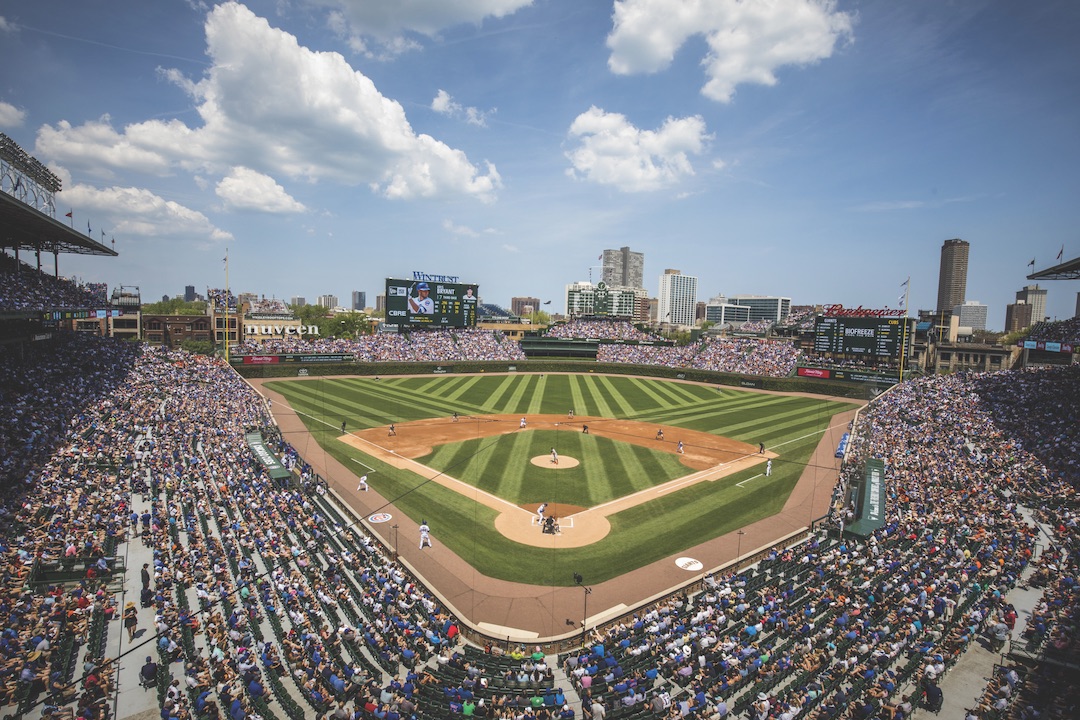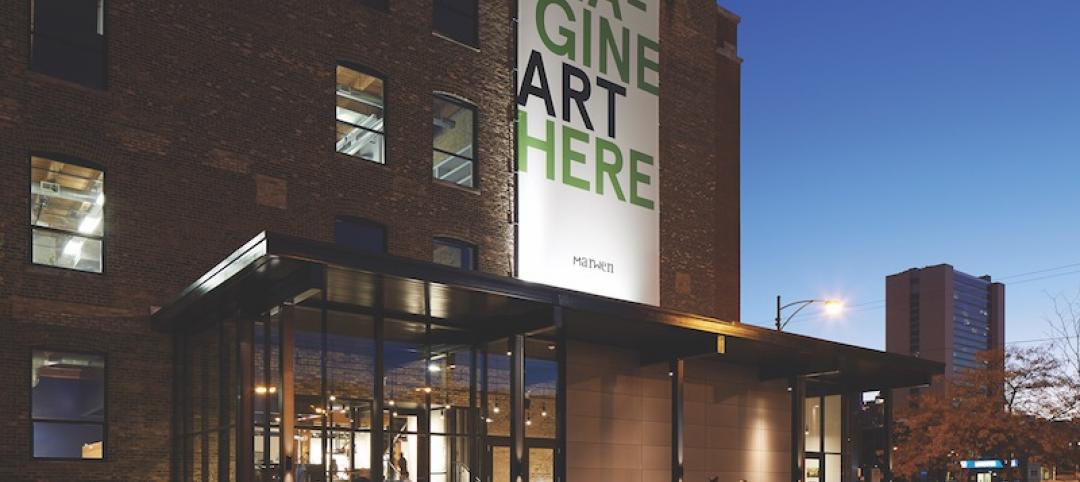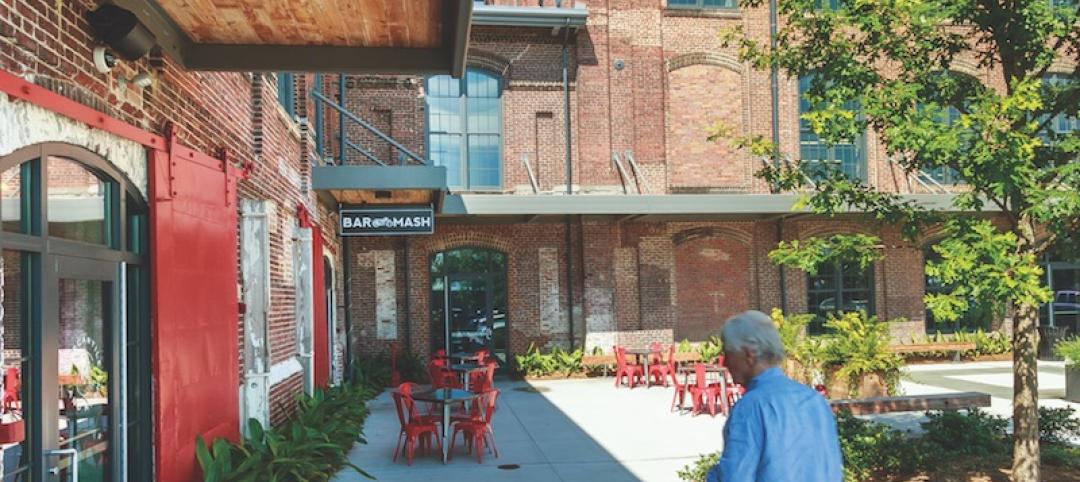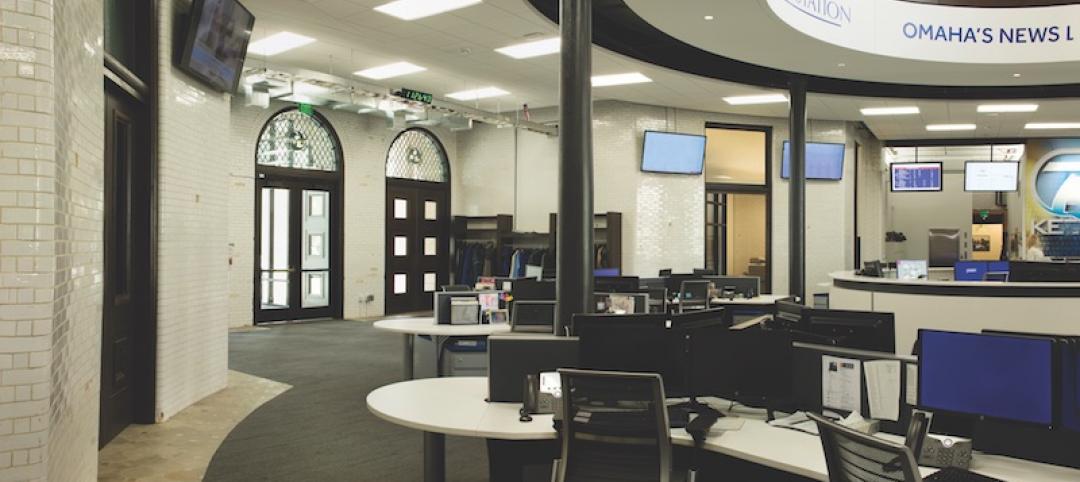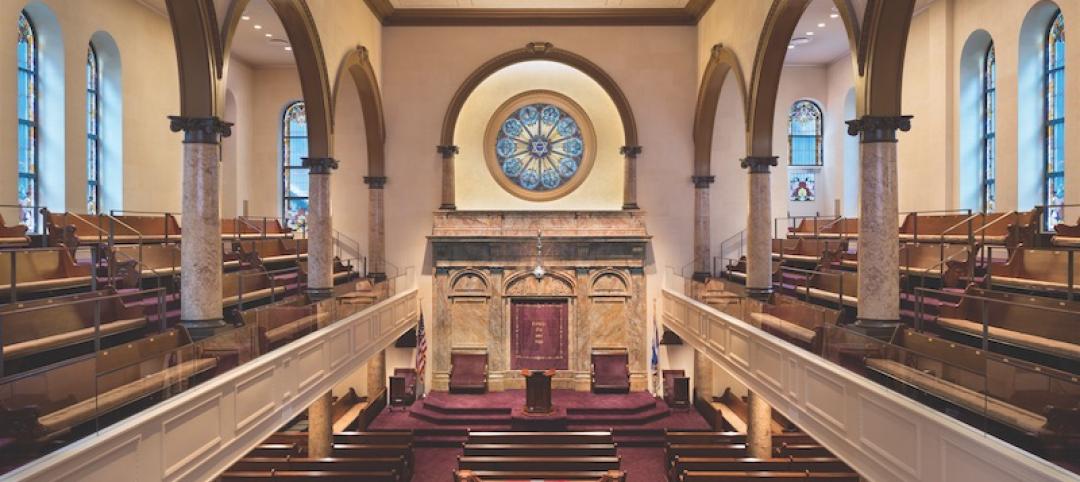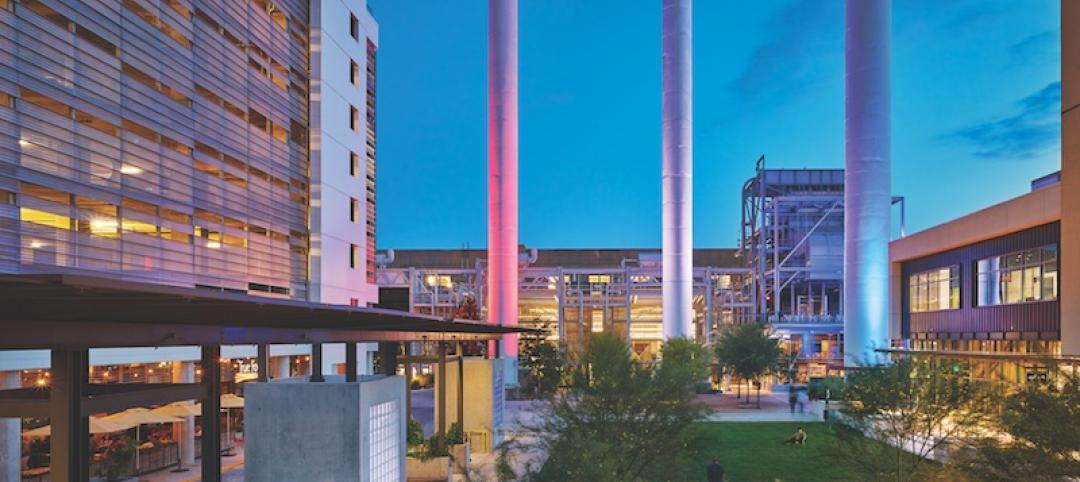Wrigley Field, the second-oldest baseball stadium in the country, opened in 1914. Soon after the Ricketts family purchased the ballpark and its main tenant, the Chicago Cubs, in 2009, plans were set in motion to significantly upgrade the deteriorating structure, expand the facility, and enhance its amenities.
The project was ambitious, and the list of improvements extensive: improving the building’s foundation, restoring and reinforcing the core structure, rebuilding the bleachers, restoring the historic marquee, reconstructing the façade, upgrading player facilities, adding premier clubs and fan amenities, improving concession and restroom availability, installing new digital outfield signage and video boards, adding modern media facilities, and converting the parking lot into a plaza and six-story office building with a new underground clubhouse.
All of this was accomplished over a five-year period during the 20 to 26 weeks per year of off season, many of those weeks in frigid weather conditions. In 2018, the project team reorganized the remaining work and expedited the schedule by one year, which meant that nearly half of the overall project volume had to be completed in the last two years.
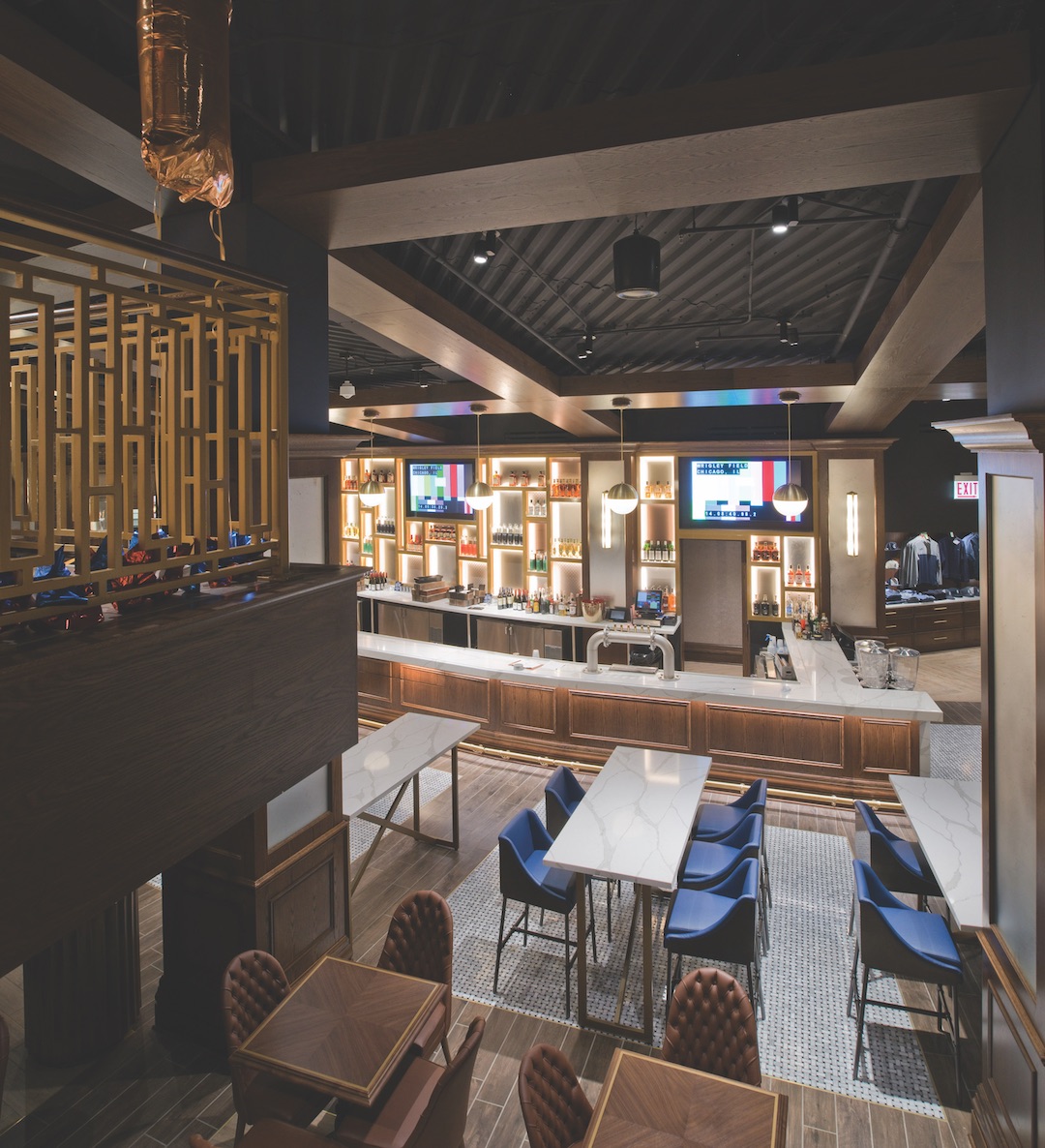 The ceiling of the 1914 Club under home plate has a ribbed metal underlayment that will drain any condensation to the edges to prevent water damage to the room.
The ceiling of the 1914 Club under home plate has a ribbed metal underlayment that will drain any condensation to the edges to prevent water damage to the room.
Planning under such constraints was critical. This project required eight years of preconstruction that didn’t end until the final phase of construction began last year. When considering the basement and new Cubs clubhouse under the former parking lot, the team explored more than 50 different sizes, layouts, and configurations, as well as associated structural materials. Throughout the design and construction, the project team relied heavily on laser scanning and 3D modeling.
The most critical part of the project was strengthening the building’s foundation to accommodate the planned expansion. Wrigley Field was essentially lifted onto stilts while the foundations and column supports were restored, vastly augmenting the ballpark’s foundational load capacity. Pepper Construction, the project’s GC, sunk four micropiles at each of the “F” line major columns to a depth of 100 feet under each column before welding on a new zero-tolerance column base. Each micropile could withstand 500,000 pounds of force; one micropile is strong enough to hold the 225-ton Statue of Liberty.
See Also: 2019 Reconstruction Awards: Betting on a city's future
Among the key elements of the stadium’s restoration, which required considerable re-engineering, was the Concourse, which loops around Wrigley Field beginning in the main grandstand and through the bleachers. A detailed sequence was developed to restore and expand the 40,000-sf mezzanine across the ballpark and two serpentine walkways while simultaneously repairing the underbelly of the ballpark’s concrete structure. A massive, 400-foot-long by eight-foot-tall grade beam, sitting on more than 90 micropiles along the western edge of the ballpark, was installed to redistribute the expanded load of the upper level concourse and stabilize soil conditions between the ballpark and the plaza.
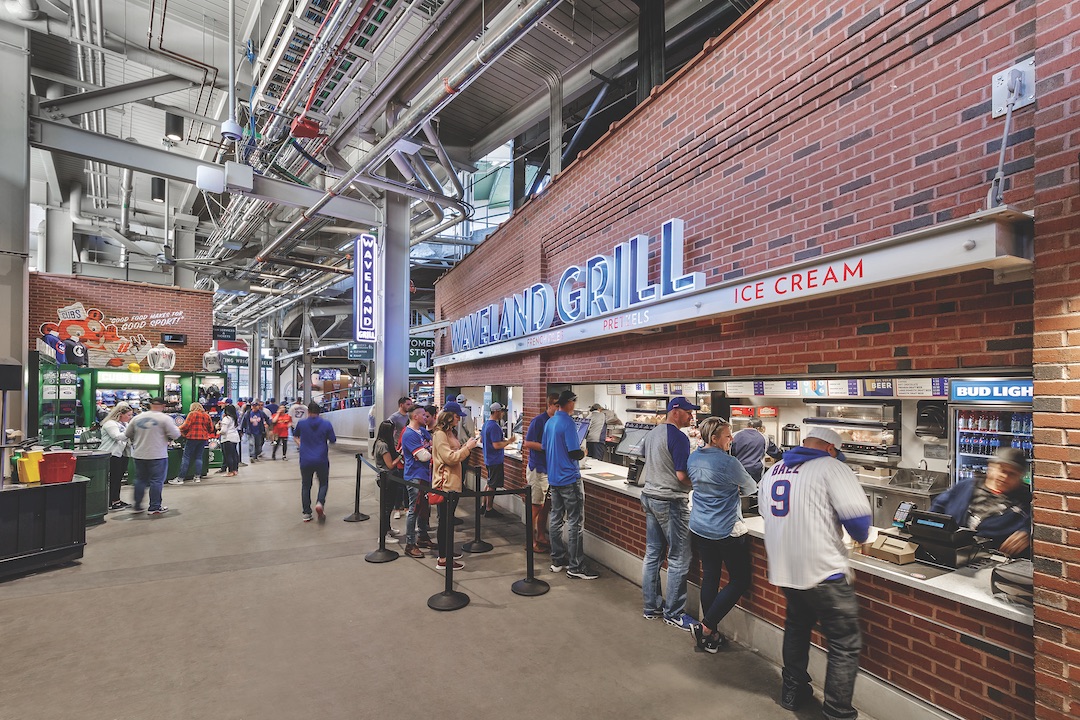 The restored concourse (below) would not have been possible without the project team’s colossal efforts to improve Wrigley Field’s antiquated structural system.
The restored concourse (below) would not have been possible without the project team’s colossal efforts to improve Wrigley Field’s antiquated structural system.
Each year during construction periods, the concourse walkway had to be ripped out to work on below-grade areas that house mechanicals, plumbing, AV equipment, and underground utilities. Once the underground work was completed, the overhead piping could also be reconstructed.
The entire exterior ballpark façade was restored to the glory days of the 1930s. The original brick features, sunburst-patterned steel grille work, and the restored historic marquee were reintroduced. The stucco and clay tile and terra cotta roofing covered the entire ballpark façade, including the expanded left- and right-field terraces.
Added to Wrigley was Gallagher Way plaza, a new six-story, two-basement facility adjacent to the ballpark. The first two floors provide retail space, the third floor is for conference rooms, and floors 4-6 serve as the Cubs’ offices. A new 30,000-sf clubhouse, located outside the ballpark under the plaza, provides the players with the best-in-class off-the-field facilities needed to train, rehabilitate from their injuries, and prepare for games.
Platinum Award Winner
BUILDING TEAM Pepper Construction (submitting firm, GC) The Ricketts Family (owner) CAA ICON (owner’s representative) Populous, Stantec (architects) Thornton Tomasetti (SE) ME Engineers (ME) Terra Engineering (CE) Details 970,000 sf Total cost Confidential at owner’s request Construction time October 2014 to April 2019 Delivery method CM at risk
Related Stories
Reconstruction Awards | Nov 16, 2016
Reconstruction Awards: Marilyn I. Walker School of Fine and Performing Arts, Brock University
The five-story brick-and-beam structure is an adaptive reuse of the Canada Hair Cloth Building, where coat linings and parachute silks were once made.
Reconstruction Awards | Nov 16, 2016
Reconstruction Awards: Marwen
Marwen currently offers 100 studio courses to 850 underserved students from 295 schools and 53 zip codes.
Reconstruction Awards | Nov 16, 2016
Reconstruction Awards: The Cigar Factory
The Cigar Factory was originally a cotton mill but became the home of the American Cigar Company in 1912.
Reconstruction Awards | Nov 16, 2016
Reconstruction Awards: St. Patrick's Cathedral
The cathedral, dedicated in 1879, sorely needed work.
Reconstruction Awards | Nov 15, 2016
Reconstruction Awards: Lovejoy Wharf
After demolishing the rotten wood wharf, Suffolk Construction (GC) built a new 30,000-sf landscaped quay, now known as Lovejoy Wharf.
Reconstruction Awards | Nov 15, 2016
Reconstruction Awards: KETV-7 Burlington Station
The 1898 Greek Revival train terminal, which was listed on the National Register of Historic Places in 1974, had been abandoned for nearly four decades.
Reconstruction Awards | Nov 14, 2016
Reconstruction Awards: The Gallery at the Three Arts Club
On the exterior of the building, masonry and terra cotta were revitalized, and ugly fire escapes on the south façade were removed.
Reconstruction Awards | Nov 14, 2016
Big-box store rescaled to serve as a preventive-care clinic
The hospital was attracted to the big box’s footprint: one level with wide spans between structural columns, which would facilitate a floor plan with open, flexible workspaces and modules that could incorporate labs, X-ray, ultrasound, pharmacy, and rehab therapy functions.
Reconstruction Awards | Nov 14, 2016
Fire-charred synagogue rises to renewed glory
The blaze left the 110-year-old synagogue a charred shell, its structural integrity severely compromised.
Reconstruction Awards | Nov 11, 2016
Adaptive reuse juices up an abandoned power plant
The power plant was on the National Register of Historic Places and is a Recorded Texas Historic Landmark.


